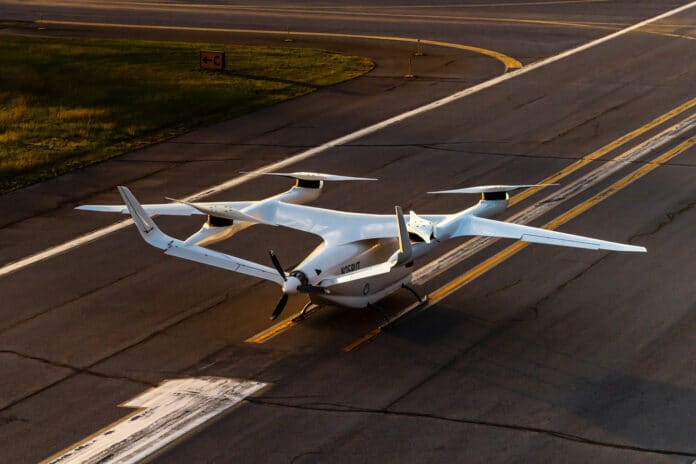Beta Technologies is making strides in the electric aviation sector. Recently, the company announced a significant flight test milestone for their Alia-250 eVTOL aircraft.
Nate Moyer, Beta’s test pilot and a former experimental test pilot for the U.S. Air Force, piloted the Alia eVTOL and successfully achieved a full transition from hover to wing-borne flight, then back to hover before landing. This achievement is a testament to the company’s commitment to innovation and its efforts to revolutionize the aviation industry.
Few companies have achieved a full transition with an eVTOL is a difficult but important landmark, and it’s no easy feat. Beta has managed to do just that with its lift-plus-cruise aircraft, and they accomplished this with a pilot on board. This puts Beta among the few eVTOL developers who have achieved this milestone with a pilot in the cockpit.
In addition to the eVTOL aircraft, Beta is also working on a fixed-wing electric conventional takeoff and landing (eCTOL) aircraft. The eCTOL version closely resembles the eVTOL version, with the exception of the overhead lifting propellers. Beta has replicated the entire structure of the eVTOL version, including its avionics, interior, and pusher motor, for the eCTOL aircraft.
The company has achieved several milestones with its eCTOL aircraft prototype, which has been flown with a pilot on board. These milestones include a multi-mission flight from Plattsburgh, New York, to Louisville, Kentucky, in December 2022; a demonstration flight in the greater New York airspace in February 2023; and the aircraft’s first international flight across the border to Montreal, Quebec, in September 2023, among others. The company claims to have flown more than 40,000 nautical miles across both aircraft types in the four years the Alia prototypes have been operating.
Beta has compiled a list of customers who are interested in both of its aircraft types and plans to get its eCTOL certified by the Federal Aviation Administration in 2025, followed by its eVTOL in 2026. The company’s electric aircraft will be used for a variety of purposes, including military missions, cargo logistics, and medical delivery.
Some of Beta’s notable customers include United Therapeutics, UPS, Bristow, LCI, Blade, Helijet, Air New Zealand, and the U.S. Air Force. In addition to its aircraft, Beta is also working on building a multimodal and interoperable charging infrastructure that can be used to charge other electric aircraft and vehicles.
Beta’s Charge Cube technology recently received UL certification in April 2024, which confirms that the technology complies with safety regulations and standards.
The transition is a critical pillar of a vertical takeoff and landing aircraft’s development. The recent test conducted by Beta was a significant milestone in the AAM industry, being the first of its kind with a pilot. Other major eVTOL players like Joby and Archer have performed unmanned remote-operated transitions and/or piloted tests, but none of them have previously done a transition test with a pilot. Joby also made headlines last November for a manned flight over a New York City heliport, but it remained in hover mode the entire time and did not transition into airplane-style cruising.
The Alia-250 was inspired by the Arctic tern. With its impressive 50-foot wingspan and high-density lithium batteries powering its electric propulsion system, Beta is committed to innovation and sustainability in the aviation industry. Beta estimates a 250 miles (402 km) range and a top speed of 138 mph (222 km/h).
Beta plans to offer both air taxi and cargo variants of the Alia-250, and they are also prioritizing charging infrastructure with the development of the Charge Cube.
